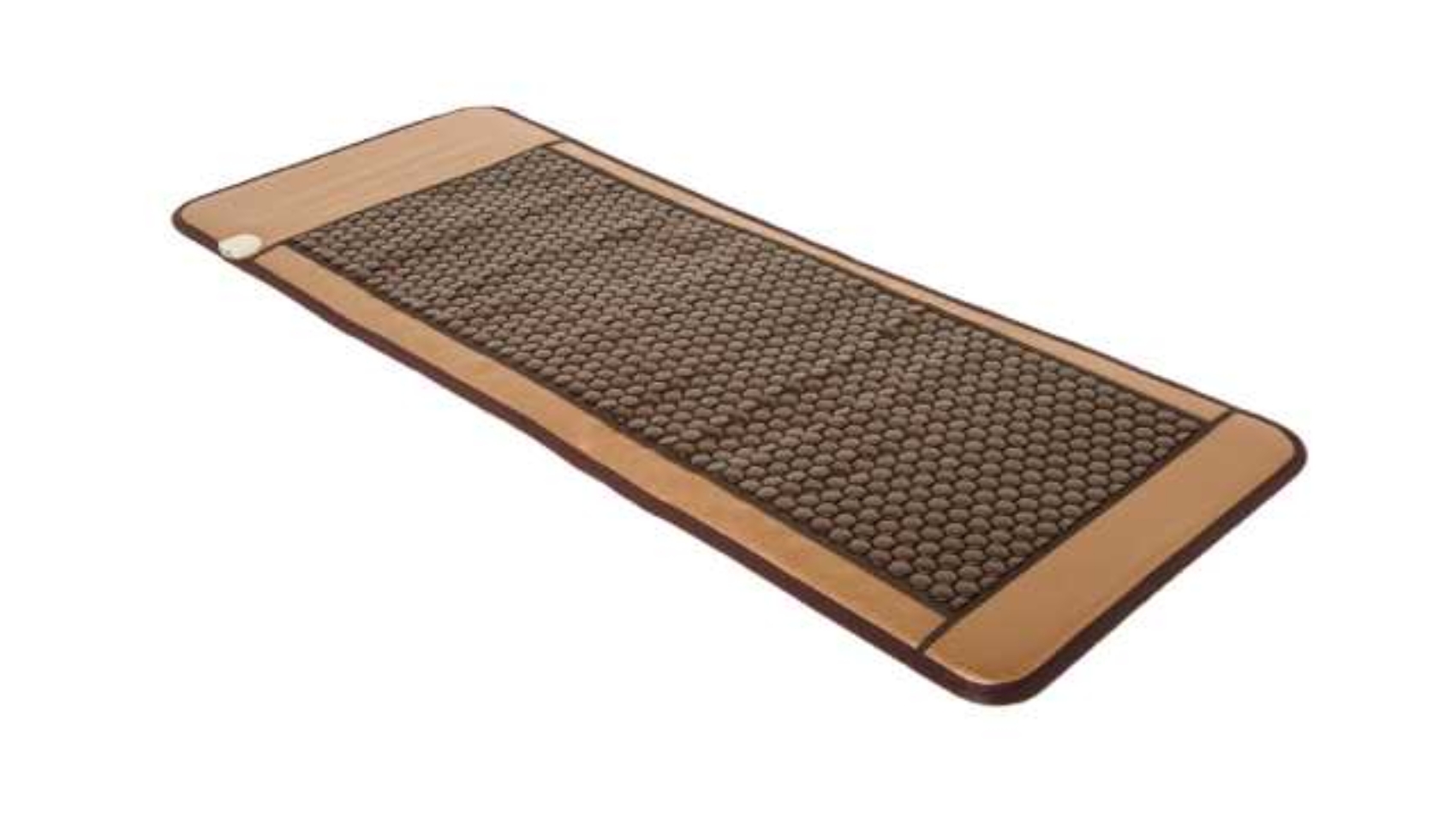
Yoga and meditation are age-old techniques used for centuries to help people find flexibility, balance, and serenity. It can be difficult to feel at ease during these sessions, though. Introducing the Therapy Heating Mat, a cutting-edge remedy that boosts your yoga and meditation practice by fusing technology and wellness. This post will discuss the features, applications, and advantages of therapy heating mats and why they might complement your regimen.
What is a Therapy Heating Mat?
A specially made mat with heating components to provide warmth while in use is called a therapy heating mat. These mats are frequently used in yoga and meditation to promote better circulation, increase relaxation, and create a cozy atmosphere. It may be simpler to stretch and maintain poses when muscle tension is reduced by the mat’s warmth.
Therapy heating mats are designed to offer therapeutic benefits; they are not your typical mats. Usually, they have heating coils or other components embedded in them that evenly distribute heat across the surface. This heat replicates the body’s natural heat production, making practice more comfortable all around.
The sensation offered by a therapy heating mat is similar to lying on a soft, warm beach with the sun gently heating your body. This warmth facilitates mental relaxation in addition to facilitating more fluid physical movements. Deeper meditation or yoga practice can be facilitated by the constant, mild heat that helps release tension and stress.
Advantages of Heating Therapy Mat Use
There are several advantages to using a therapy heating mat, including:
Increased Calm
The mat’s soft heat promotes mental clarity and muscle relaxation, which enhances the quality of both the yoga practice and the depth of meditation.
A key element of both yoga and meditation is relaxation. The therapeutic heating mat’s warmth has a similar effect on the body as a hot stone massage. It releases tension and stiffness by penetrating deeply into the muscles. By allowing the muscles to relax, one can stretch further and hold poses for longer periods without experiencing pain.
In addition, the heat may have a calming mental influence. When the body is not distracted by pain or cold, it is simpler to concentrate and go into a meditative state. Warmth signals the body to let go of tension and anxiety, which makes the practice more peaceful and engaging.
Improved Flexibility
Heat helps the muscles receive more blood flow, which can enhance flexibility and lower the chance of injury. This is especially helpful when doing yoga, as flexibility is essential.
In yoga, flexibility is essential for executing different asanas (poses). The heat from the mat causes blood vessels to widen, which increases oxygen and blood flow to the muscles. This lessens the chance of strains and sprains and increases the pliability of the muscles.
Imagine bending a piece of rubber that is warm as opposed to one that is cold; the warm rubber bends more readily and doesn’t break. Similar to this, warmed muscles are more flexible and responsive, which facilitates the precise and effortless execution of yoga poses. Improved alignment and deeper stretches are also made possible by increased flexibility, which benefits general physical wellness.
Pain Management
Sore joints and muscles can feel better thanks to the mat’s warmth. It eases discomfort and encourages healing, much like a warm, comforting hug.
One of the most obvious and instant advantages of using a therapy heating mat is pain relief. Warmth aids in promoting circulation and decreasing inflammation, two common causes of pain. This can be especially helpful for people with fibromyalgia or arthritis, two conditions that cause chronic pain.
Furthermore, the heat relieves joint stiffness and tense muscles, offering immediate pain alleviation. It is similar to applying a hot compress to a sore spot; by increasing blood flow and relaxing the afflicted muscles, the localized heat helps to reduce pain and expedite the healing process.
Improved Rest
By relaxing the nervous system and getting the body ready for sleep, using a heated mat during meditation or other relaxation exercises in the evening can help people sleep better.
Getting enough sleep is critical to general health and well-being. The body can be told when it’s time to unwind and relax by the comforting warmth of a therapy heating mat. You can assist your body in entering a resting state by using the mat for gentle yoga or evening meditation.
The stress hormone cortisol is reduced by heat, but serotonin, a neurotransmitter that controls mood and sleep, is produced in greater amounts. The body is better prepared for a restful night’s sleep thanks to this balance. Using a heated mat before bed can be a soothing ritual that heralds the end of the day and the start of a restful, peaceful sleep cycle, much like taking a warm bath before bed.
How Do Therapeutic Heating Mats Operate?
Heating Components
The integrated heating components of therapy heating mats can be heated to a variety of temperatures. The purpose of these components is to equally distribute heat over the mat’s surface.
The heating element is the central component of a therapy heating mat. Usually, the materials used to create these components have good heat conductivity and radiative qualities. There are no hot or cold spots because they are evenly distributed throughout the mat thanks to their embedding.
A thermostat regulates the heating elements, which are wired into a power source. This enables users to modify the temperature to suit their comfort level and the needs of their practice. The adjustable settings offer flexibility, whether you need a milder warmth for meditation or a hotter temperature for vigorous yoga sessions.
Control of Temperature
The majority of mats have a temperature control unit built in so you can adjust the ideal degree of warmth. You can tailor your experience to meet your comfort needs thanks to this feature.
One essential component of therapy heating mats is temperature control. Usually, these mats have a manual or digital control unit that lets users choose the temperature they want. To ensure both safety and energy efficiency, the control unit is frequently fitted with a timer function that can turn the mat off automatically after a predetermined amount of time.
You can adjust the heat level to suit your preferences and the particular requirements of your practice, making it a customized experience. For example, you could select a higher setting to release tension in your muscles before strenuous yoga practice and a lower setting for a relaxing meditation session.
Composition of the Material
The premium, heat-resistant materials used to make these mats guarantee both longevity and safety. Additionally, the materials are made with effective heat retention in mind.
Therapy heating mats are made of materials that are selected for their strength and resistance to deterioration under high temperatures. To guarantee that the heat is kept inside the mat and does not easily escape, common materials include insulating layers and heat-resistant textiles.
These materials were also picked because they are comfortable and simple to clean. They should be durable enough to hold their shape and functionality over time, but still soft enough to lie on for extended periods. They must also be safe for skin contact and non-toxic because the mat will be used near the body.
Including the Mat in Your Daily Routine
Yoga in the morning
Warm up with a yoga practice to start your day. Your muscles will become more awake and your body will be more ready for the day thanks to the heat from the mat.
Yoga in the mornings is a great way to energize your body and mind and create a good vibe for the rest of the day. You can improve this experience by incorporating a therapy heating mat into your morning routine. It’s easier to execute stretches and poses when the muscles are gently roused by the warmth.
In addition to increasing circulation, heat has a mildly energizing effect that can make you feel more awake and prepared to face the day. By adding the mat to your morning routine, you can turn it into a reassuring ritual that will give you a sense of stability and serenity that will last throughout the rest of your day.
Meditation in the Evening
When you meditate in the evening, use the mat to help release the tension and relax from the day. It may be simpler to unwind and concentrate in a warm atmosphere.
The best time to unwind and let go of the day’s stress is to meditate in the evening. This exercise can be enhanced by the use of a therapy heating mat, which offers a cozy and comfortable surface for relaxation. It is simpler to enter a meditative state when the body is calmed down by the heat.
Imagine unwinding on a cozy, warm mat after a demanding day. The heat can help calm the mind and relax tense muscles, allowing for a more profound and healing meditation practice. This relaxation is a great addition to your nightly routine because it can help your body get ready for a restful night’s sleep.
Relaxation After Exercise
Use the mat to ease sore muscles and hasten recovery after a workout. The mild warmth can help ease pain and stiffness in the muscles.
Recuperation after exercise is crucial to preserving muscle mass and avoiding injuries. In this healing process, a therapeutic heating mat can be a useful tool. Muscles can get sore and stiff after a strenuous workout. These muscles become less stiff and have more blood flow as a result of the heat from the mat relaxing them.
Exercise-induced accumulation of lactic acid and other metabolic waste products can be expedited by increased circulation, which facilitates their removal. The mat is a useful addition to your exercise routine because it helps greatly reduce muscle soreness and enhance general recovery when used for 20 to 30 minutes after a workout.
Heating mats enhance yoga poses
Child’s Pose
A resting pose that can be extremely soothing is a child’s pose. By giving the back and legs soothing warmth, using a heated mat helps further promote this state of relaxation.
A common gentle resting pose for releasing tension and stress from the body is a child’s pose. The additional warmth of a therapy heating mat can intensify the calming effects of this pose. The heat facilitates a more comfortable and deeper stretch by helping to relax the muscles in the legs, hips, and back.
Warmth can also aid in mental calmness, which makes it simpler to concentrate on your breathing and go into a meditative state. A child’s Pose on a heated mat is a great way to release tension and renew the body because it combines mental and physical relaxation.
Dog with Downward Look
The entire body is stretched in this pose, and the heat from the mat can help release tension in the muscles, improving the stretch’s comfort and effectiveness.
A fundamental yoga pose that stretches and strengthens the entire body is a downward-facing dog. The benefits of this pose can be increased by doing it on a heated therapy mat. Stretching the shoulders, calves, and hamstrings is made easier by the heat’s ability to relax the muscles.
Additionally, the warmth may help to loosen up the joints, allowing for a more thorough stretch and increased range of motion. This may improve your comfort level in the pose, enabling you to hold it longer and reap the full benefits of the stretch. Heat-induced increased blood flow aids in muscle recovery and lowers the chance of injury.
Forward Bend Seating
Warmth can aid in hamstring and lower back relaxation, enabling you to increase flexibility and deepen the stretch.
One pose that works the hamstrings and lower back is the Seated Forward Bend. The effectiveness of this pose can be greatly increased by doing it on a therapy heating mat. Reaching forward and deepening the stretch is made easier by the heat’s ability to relax the hamstrings.
Furthermore, the warmth can release lower back tension, which lessens pain and makes a deeper stretch possible. This is a great pose to release tension and encourage relaxation in the body because it can increase the range of motion and overall flexibility.
Methods of Meditation with Heating Mats
Meditation with a Guide
To improve concentration and relaxation, try combining guided meditation sessions with the use of a heated mat. Deep meditation can be practiced in a calm atmosphere that is facilitated by warmth.
In guided meditation, a live or recorded guide leads you through a variety of mindfulness and relaxation exercises. By offering a warm, cozy surface to sit or lie on, a therapy heating mat can improve the experience during these sessions.
The heat aids in body relaxation, which facilitates concentration during meditation and helps you to follow the guide’s instructions. This extra comfort can help you reach a deeper level of awareness and relaxation during your meditation.
Breathing Techniques
It can be very calming to perform breathing exercises on a heated mat. It may be simpler to concentrate on your breathing if you remain serene and centered due to the warmth.
In yoga and meditation, breathing techniques like pranayama are frequently employed to relax the body and mind. These exercises can be made more effective by doing them on a therapy heating mat. Breathing deeply and fully becomes easier when the muscles are relaxed by the warmth of the mat.
Additionally, by calming the mind, this relaxation can help you focus on your breathing and reach a state of tranquility. Warm comfort and mindful breathing work together to dramatically improve your general well-being.
Meditation with mindfulness
Practice mindfulness meditation on the mat. The mild warmth can improve your overall meditative experience by assisting with your ability to stay grounded in the present.
Focusing on the present and objectively observing thoughts and sensations are key components of mindfulness meditation. Being able to sit or lie on a warm, comfortable surface during mindfulness meditation is made possible by using a therapy heating mat.
The warmth can act as a focal point for your attention, which helps to ground you in the here and now. This can improve the overall meditative experience and encourage a deeper sense of peace and awareness by making it simpler to stay mindful and in the present moment.
Safety Advice and Measures
Reduce to Start
Always turn the heat up gradually to a comfortable level, starting at the lowest setting. By doing this, burns and overheating are avoided.
It’s crucial to start with the lowest heat setting on a therapy heating mat so that your body can get used to the warmth. By raising the temperature gradually, you can avoid overheating or accidental burns to yourself.
Starting low also enables you to determine the ideal temperature for your practice and to assess your level of comfort. It’s best to proceed cautiously and stay away from any possible dangers brought on by extreme heat.
Limit Your Use
Don’t spend too much time on the heated mat. 20 to 30-minute sessions should be the maximum to guarantee safety and avoid overheating.
It’s crucial to use therapy heating mats sparingly even though their warmth can be quite soothing. Extended periods of exposure to heat can cause dehydration and overheating. Keep your mat sessions to a maximum of 20 to 30 minutes to guarantee that you reap the benefits without experiencing any negative side effects.
Take pauses between sessions if you must use the mat for extended periods so that your body can cool down and replenish fluids. You can safely take advantage of the therapeutic benefits of the mat with this well-rounded approach.
Examine any damage.
Check the mat frequently for indications of wear or damage. If the mat exhibits any malfunctions, do not use it.
Your safety needs to perform routine maintenance and inspections on your therapy heating mat. Examine the mat for any indications of wear and tear, including frayed wires, exposed heating components, or fabric rips. Stop using the product right away if you see any problems, and contact the manufacturer for options for replacement or repair.
There are significant safety risks associated with using a damaged mat, such as electrical shocks and fire hazards. It is possible to maintain the safety and optimal functionality of your matting by conducting routine inspections.
Remain Hydrated
As the heat can cause you to perspire and lose fluids, make sure you stay hydrated by drinking lots of water both before and after using the heated mat.
Sweating while using a therapy heating mat can result in fluid loss. It’s crucial to stay hydrated by drinking lots of water both before and after using the mat. Maintaining your general health and controlling your body temperature are aided by staying hydrated.
It’s critical to replace fluids lost during your session because dehydration can cause headaches, dizziness, and other health problems. By taking this easy precaution, you can be sure that you stay properly hydrated and still benefit from the mat.
Conclusion
Your comfort and overall experience with meditation and yoga can be greatly improved by adding a Therapy Heating Mat to your practice. These mats are an excellent complement to any wellness routine because of their ability to promote greater relaxation, enhanced flexibility, and pain relief. You can experience the utmost comfort and benefit from the many features these cutting-edge mats have to offer by selecting the appropriate mat and adhering to safety precautions.
A therapy heating mat is something that anyone looking to improve their yoga and meditation practices should give some thought to. The additional coziness and comfort can have a big impact on your practice, regardless of how experienced you are.


















